The 15 Fastest Animals in the World (on Land)

In the animal kingdom, speed is a survival tool for both predators and prey. For predators, speed is paramount in successful hunting. For prey, speed is often their best defense.
This article will look into the world’s fastest land animals.
How Fast Can Humans Run?
The fastest humans are elite sprinters. Though these athletes reach amazing speeds, they are modest compared to many animals. The average sprinting speed for humans is estimated be about 14 miles per hour (24 kilometers per hour).
Usain Bolt, retired Jamaican sprinter, holds the record for the fastest human speed. During his world record 100-meter sprint in 2009, Bolt achieved a top speed of 27.8 miles per hour (44.7 kilometers per hour). However, the cheetah can run 3.7x faster, at 75 miles per hour (121 kilometers per hour).
Why Are Animals So Fast Compared to Humans?
Animals are faster than humans due to several key factors rooted in biology and evolution.
The difference in speed is primarily attributed to anatomical specialization. Many fast animals, such as cheetahs and antelopes, have evolved body structures optimized for speed. This includes longer limbs, lightweight frames, and specialized muscles that allow for rapid acceleration and high-speed maneuvers.
The muscle composition of these animals is also significantly different. Fast-moving animals often have a higher proportion of fast-twitch muscle fibers, which are designed for quick, explosive actions. Additionally, these animals often have adaptations like non-retractable claws or hoofed feet, providing better traction for quickness.
From an evolutionary standpoint, the need for speed in animals can be linked to survival. Predators evolved to run faster to catch their prey, while prey animals developed higher speeds to evade predators. This evolutionary arms race has led to the development of astonishing speed in certain species.
In contrast, human evolution has favored endurance and adaptability over speed. Humans possess more slow-twitch fibers which are conducive to stamina. Humans developed to survive as versatile hunters and foragers, capable of long-distance travel and running. Our upright posture and bipedal locomotion, while efficient for endurance, are no match to the high-speed quadrupedal movement seen in many fast animals.
The Top 15 Fastest Land Animals
1. Cheetah – Top Speed: 75 mph (121 kph)
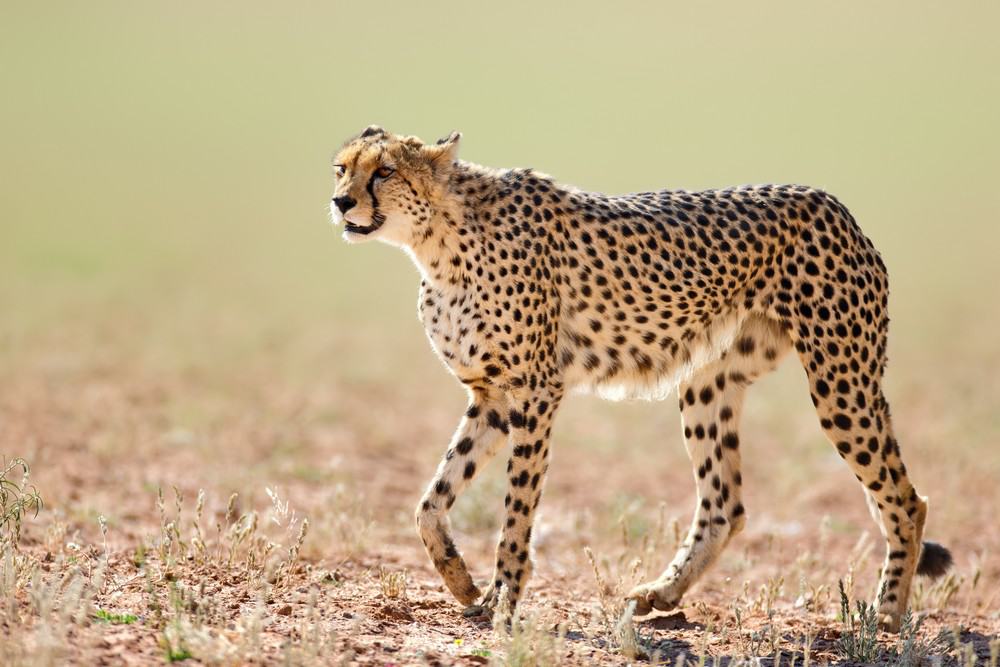
The cheetah, the embodiment of speed, has evolved to be the fastest land mammal. Its slender, aerodynamic body, flexible spine, and long, muscular legs are perfect adaptations for high-speed pursuits. The cheetah’s respiratory system is highly efficient, allowing for rapid oxygen intake, essential during sprints. Its tail acts as a rudder for balance, while its black tear marks reduce glare and enhance focus during hunting. Cheetahs excel in short bursts of speed but lack endurance, which makes their hunting strategy a high-stakes game.
2. Pronghorn Antelope – Top Speed: 55 mph (89 kph)
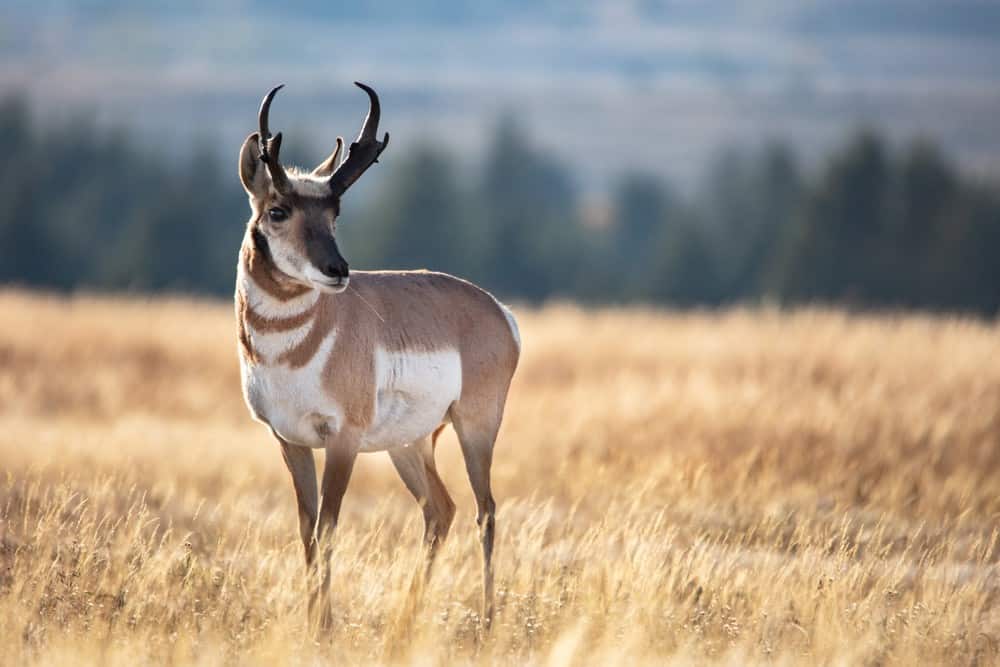
The pronghorn antelope boasts blazing speed, outpacing most predators in North America. Its evolutionary adaptations include a large heart and lungs, facilitating efficient oxygen circulation during long chases. Pronghorns have a unique hollow hair structure, providing insulation and reducing body weight for better speed efficiency. Their wide field of vision helps them spot predators on the open plains. Unlike cheetahs, pronghorns maintain high speeds for longer distances.
3. Springbok – Top Speed: 55 mph (89 kph)
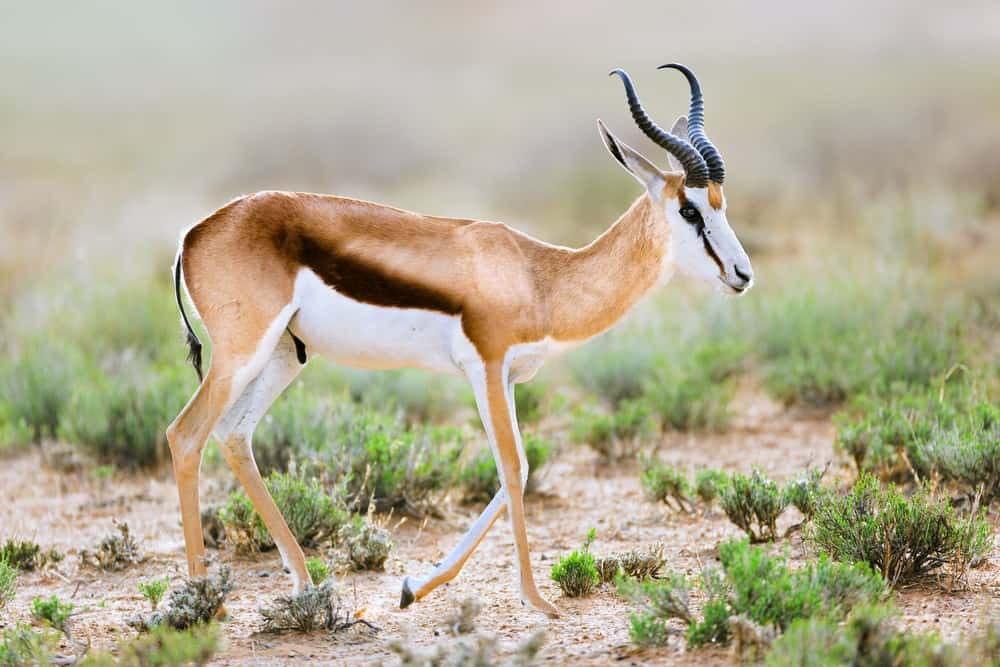
The springbok is a medium-sized antelope. The animal’s name comes from two Afrikaans words that mean jump (spring) and antelope (bok). This refers to its characteristic “pronking” behavior, where it leaps high, up to 11 feet in the air. It is theorized that they engage in this behavior to raise an alarm or to distract a nearby predator. Springboks have a tan and white coat that blends with the South African grasslands, providing camouflage from predators.
4. Wildebeest – Top Speed: 50 mph (80 kph)

Wildebeests, known for their annual migration in the Serengeti and Masai Mara, can run at speeds of up to 50 mph. Their capable build, with strong shoulders and a large head, aids in these quick sprints. Wildebeests have evolved to deal with the challenges of long migrations, where speed and endurance are important. Their herding behavior is a strategy against predators, making it harder for predators to single out individuals. Wildebeests are quite agile and can quickly change direction. Their migrations are one of nature’s most spectacular events.
5. Lion – Top Speed: 50 mph (80 kph)

Lions, the apex predators of the African savannah, can reach impressive speeds in short bursts. They use their mighty legs to ambush and catch their prey swiftly. Female lions, generally faster and more agile, are primarily responsible for hunting, and use their speed strategically in coordinated attacks. Lions’ hunting technique involves stealth and power, leveraging their speed for sudden charges. The pride relies on teamwork and strategy rather than just chasing down prey.
6. Blackbuck – Top Speed: 50 mph (80 kph)

Blackbucks are native to the Indian subcontinent. Their sleek build and long legs facilitate quick, graceful movements, which it uses to evade predators. Blackbucks are also excellent jumpers. The males, recognizable by their spiraled horns, use their speed in territorial disputes and to attract mates. Their coloring, a contrast of black and white in males, provides a degree of camouflage in their grassland habitat. Blackbucks serves as a prey species and seed disperser through their grazing in their environment.
7. American Quarter Horse – Top Speed: 47.5 mph (76.5 kph)
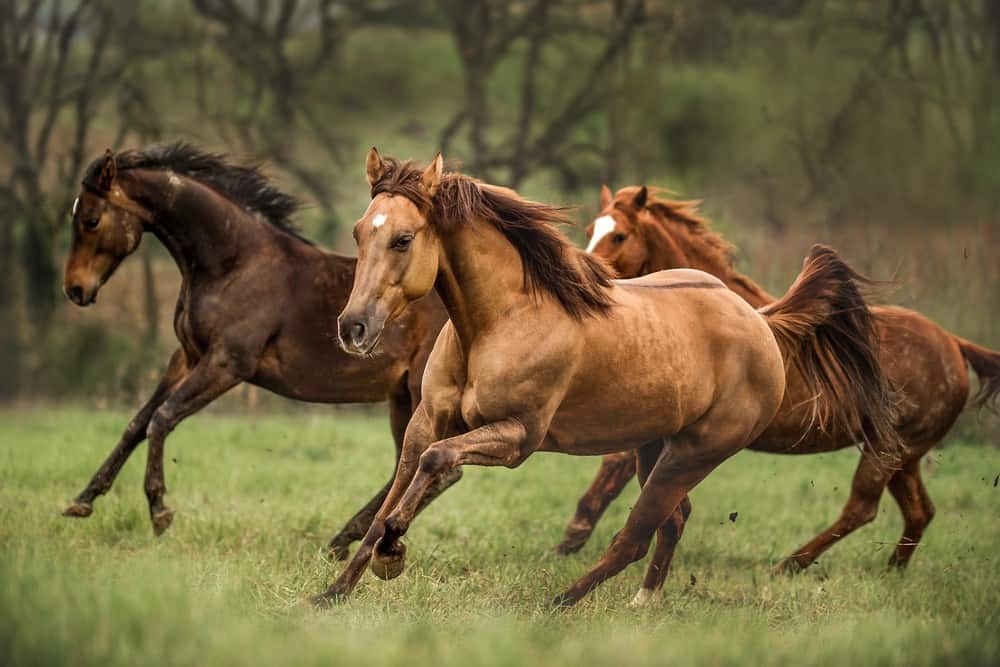
The American Quarter Horse is built for speed over short distances, particularly in quarter-mile races. This breed’s muscular frame, especially its robust hindquarters, enables explosive acceleration. Quarter Horses are versatile, excelling in rodeo events, cattle herding, and other equestrian sports. Their agile nature and quick reflexes make them ideal for activities requiring sudden starts and stops. Quarter Horses have a calm and docile temperament, making them popular riding horses. The breed’s history and development are closely tied to the American West, embodying the spirit of the frontier.
8. Brown Hare – Top Speed: 45 mph (72 kph)

The brown hare has great speed and agility for evading predators in open fields. Its powerful hind legs enable high-speed running and significant leaping ability. Brown hares are mostly nocturnal, using their speed to forage for food and escape nocturnal predators. They spend the daytime in shallow depressions called ‘forms’, relying on their camouflage to stay hidden. Their ability to swim adds to their repertoire of skills for escaping threats. Brown hares are solitary creatures.
9. Greyhound – Top Speed: 43 mph (69 kph)
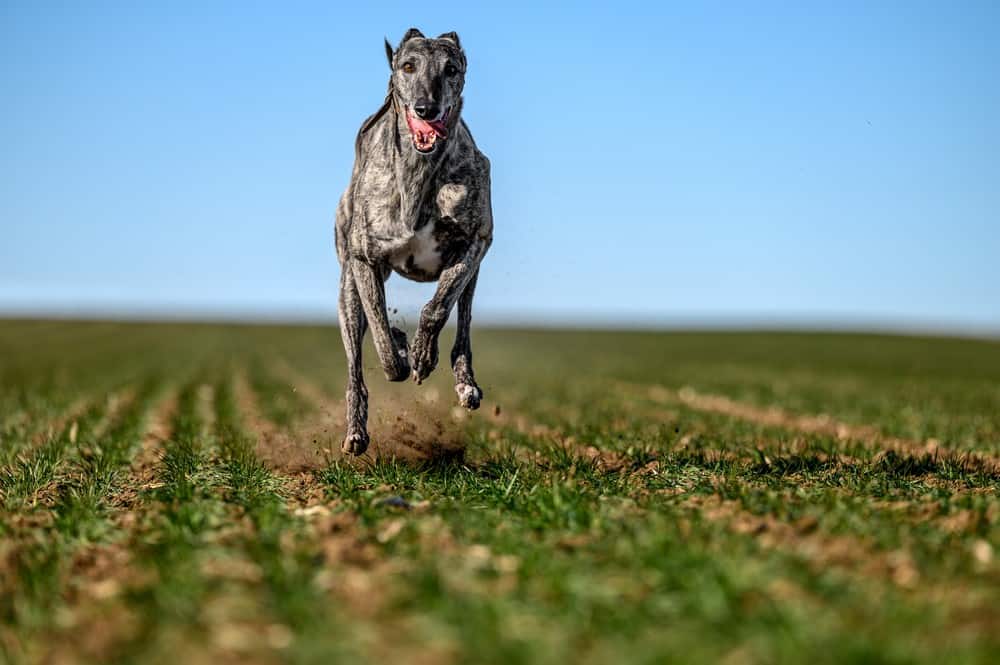
Greyhounds are celebrated for their incredible speed, primarily in dog racing. Their lean, narrow bodies and long legs contribute to their swift movements. Greyhounds possess a large heart and an abundance of fast-twitch muscle fibers, perfect for speed and acceleration. Their wide field of vision allows them to spot prey or competitors from a great distance. Despite their speed, greyhounds are known for their gentle and friendly nature. Historically, they were bred for hunting due to their speed and keen sight, making them valuable companions for hunters.
10. Kangaroo – Top Speed: 44 mph (71 kph)

Kangaroos are unique to Australia. They are known for their hopping motion, which allows them to reach very high speeds. Their strong hind legs and large feet are key to this efficient form of locomotion. Kangaroos use their long tails for balance when moving and for support when standing. They are capable of covering vast distances in search of food and water, a necessity in the often arid Australian landscape. Kangaroos can leap up to 25 feet in a single hop and can jump 6 feet high. This hopping mechanism is not only a means of rapid movement but also conserves energy.
11. Coyote – Top Speed: 43 mph (69 kph)
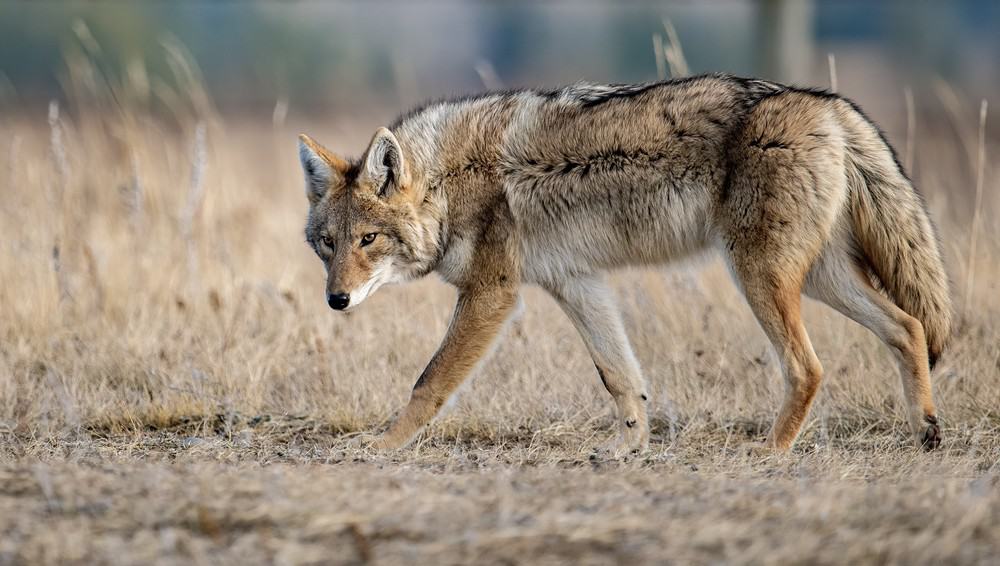
Coyotes are well known for their adaptability. They thrive in a variety of habitats, including urban environments. Their speed is a key factor in their hunting strategy, allowing them to catch a variety of prey. Coyotes are also skilled at evading threats, using their speed to escape larger predators and human encroachment. These animals have a diverse diet, adjusting their hunting techniques to local food sources. Coyotes are also proficient swimmers, complementing their terrestrial agility.
12. African Wild Dog – Top Speed: 42 mph (68 kph)
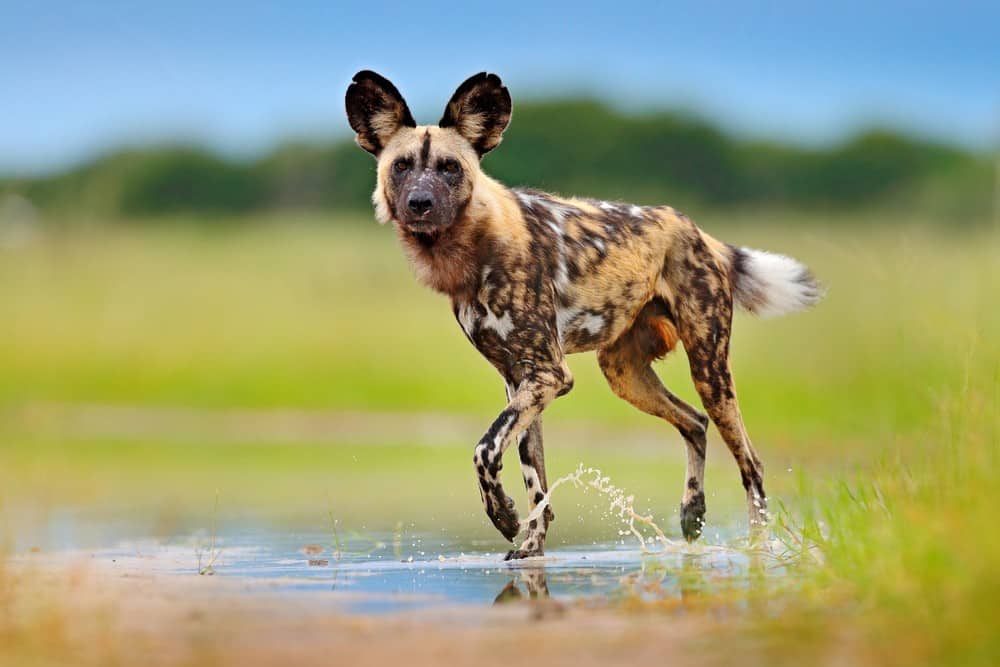
African wild dogs are known for their uncanny endurance and teamwork during hunts. Their long legs and lean build facilitate their ability to maintain high speeds over long distances. These dogs hunt in packs, coordinating their movements to outmaneuver and exhaust their prey. Their large, rounded ears aid in communication and also help dissipate heat during long chases. African wild dogs have one of the highest success rates in hunting among carnivores, around 80%.
13. Jackal – Top Speed: 40 mph (64 kph)
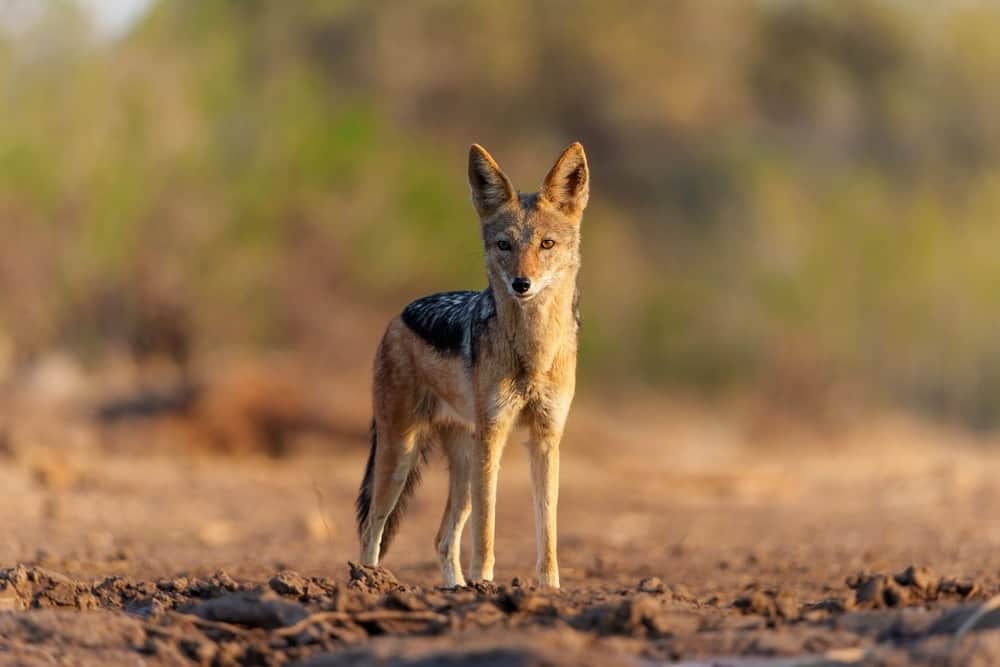
Jackals are smaller relatives of wolves and coyotes. Their omnivorous diet includes fruits, insects, and small mammals, which they skillfully hunt using their quick movements. Jackals are opportunistic feeders, often scavenging when hunting is not feasible. They are highly adaptable, able to survive in a variety of habitats, from deserts to grasslands. Jackals are social animals, often seen in pairs or small groups, working together to hunt or defend territory. Their cunning nature, combined with their speed, makes them proficient in their ecosystems.
14. Ostrich – Top Speed: 40 mph (64 kph)
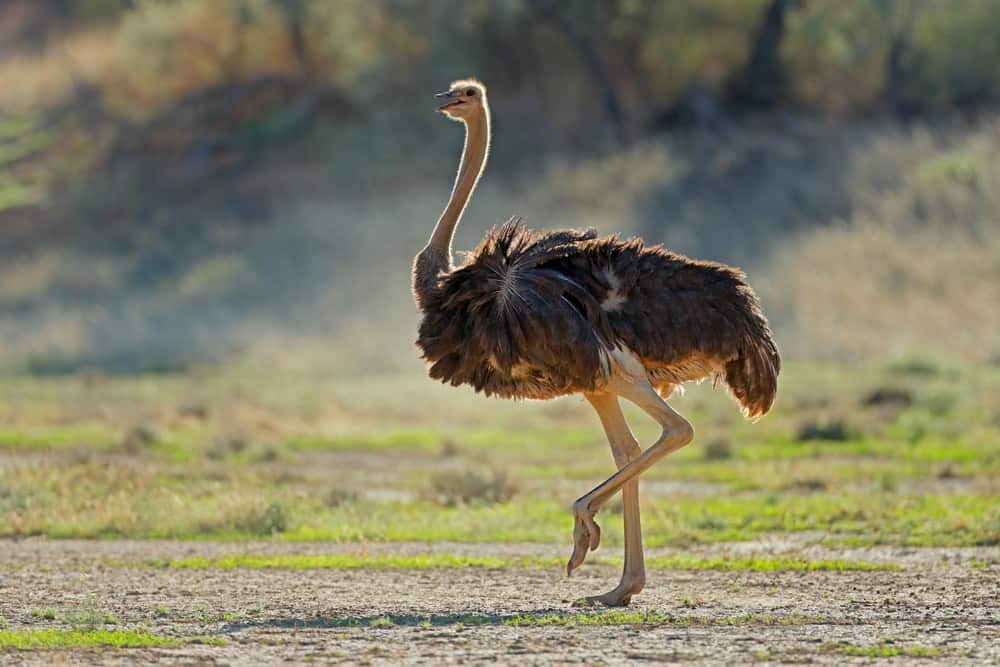
The ostrich is the world’s largest bird and, surprisingly, one of the fastest land animals. Despite being flightless, their long, powerful legs enable them to reach high speeds and cover large distances quickly. Ostriches use their speed to outrun most of their predators. Their two-toed feet are well adapted for fast, efficient running on different terrains. Ostriches also have excellent vision and hearing, which helps them detect threats from afar.
15. Elk – Top Speed: 40 mph (64 kph)
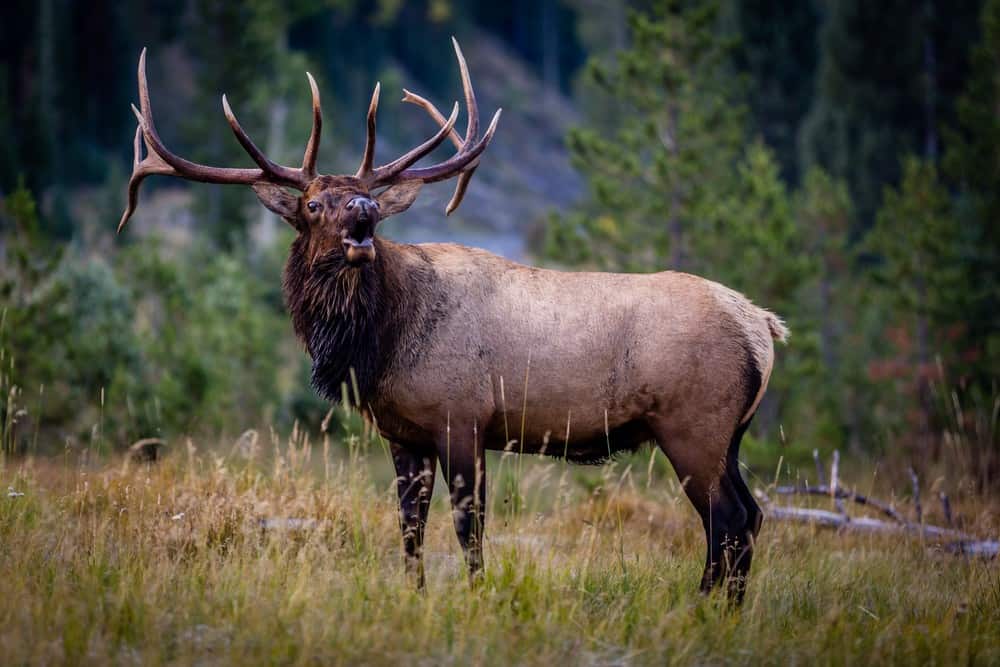
Elk, one of the largest species within the deer family, are capable of reaching speeds up to 40 mph. Their agility and speed help them maneuver the forests and open plains of North America and Eastern Asia. Elks are known for their large antlers, which can span up to four feet and are shed and regrown annually. These antlers are a status symbol among males during the mating season and also serve as a defense mechanism against predators. Elks are also notable for their migratory behavior, traveling long distances between their summer and winter habitats.


